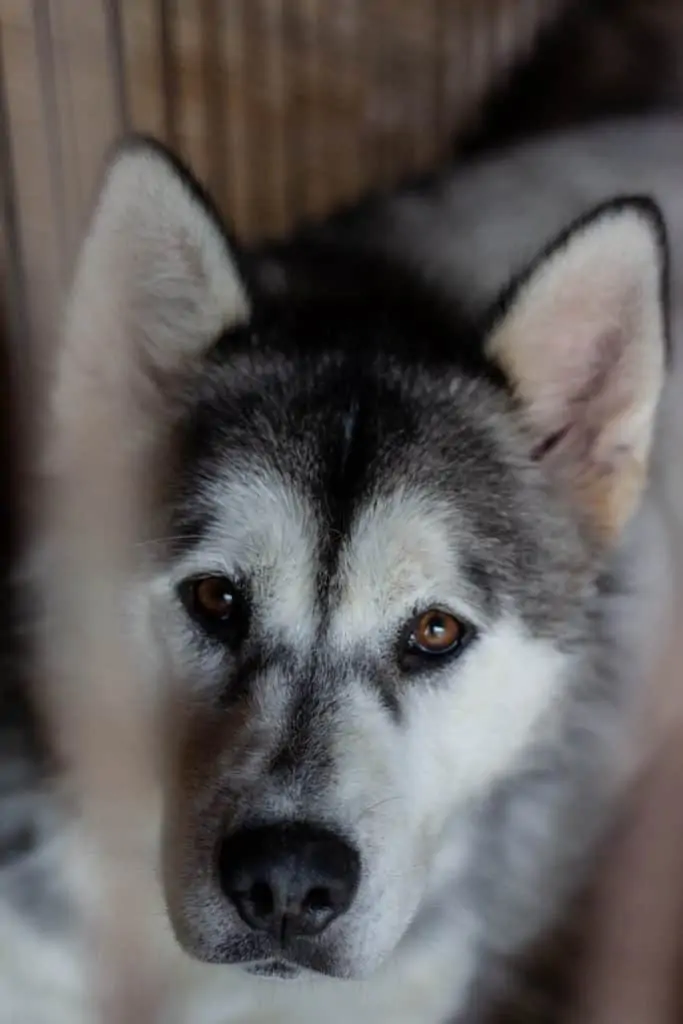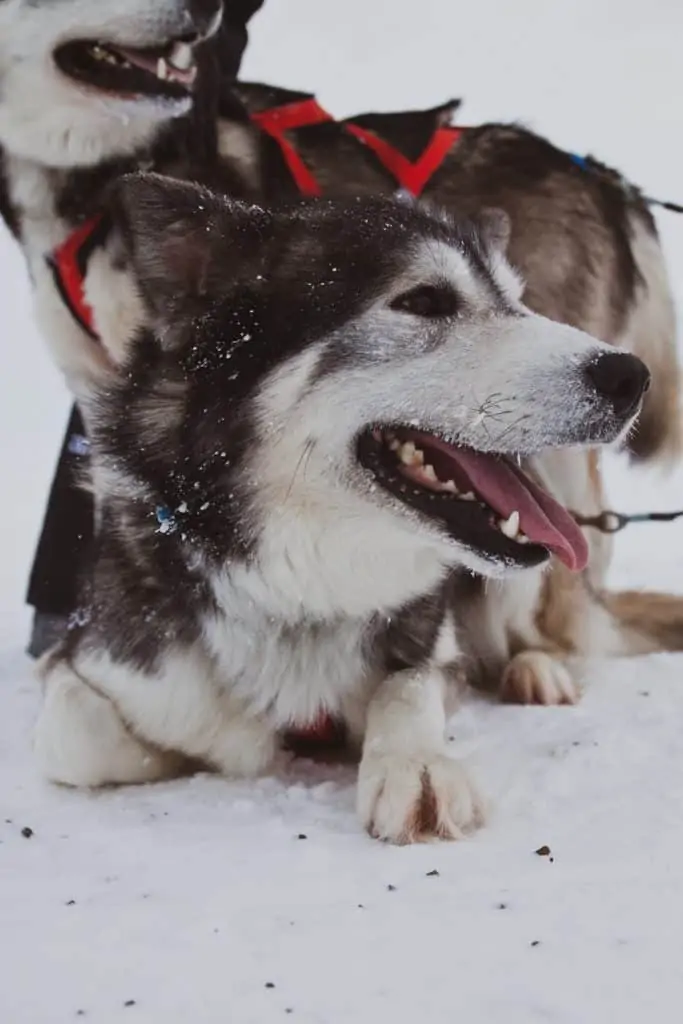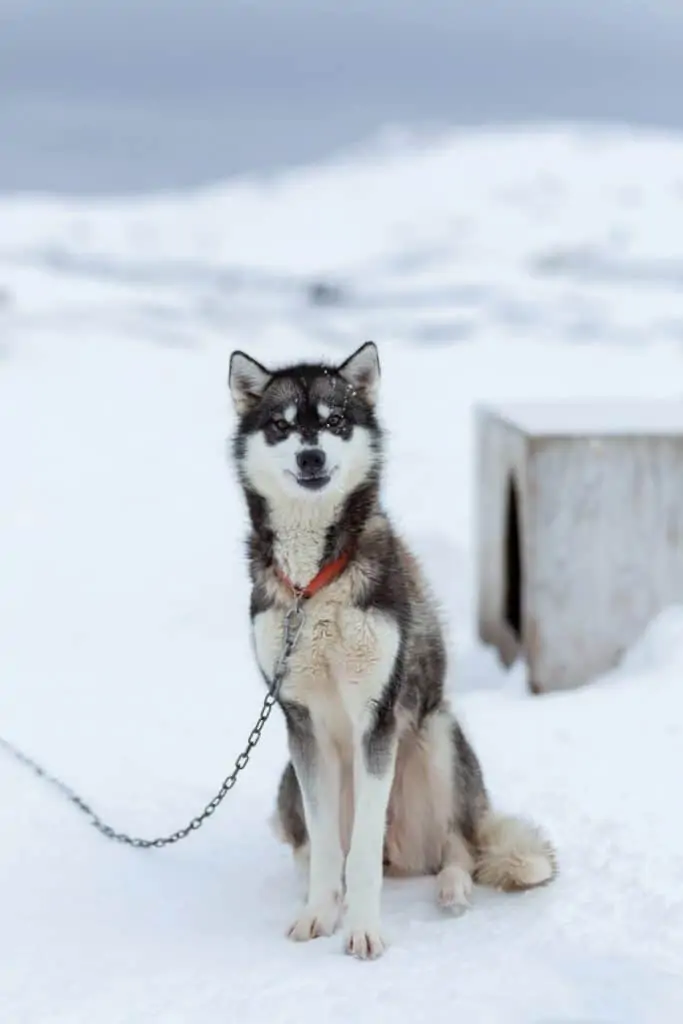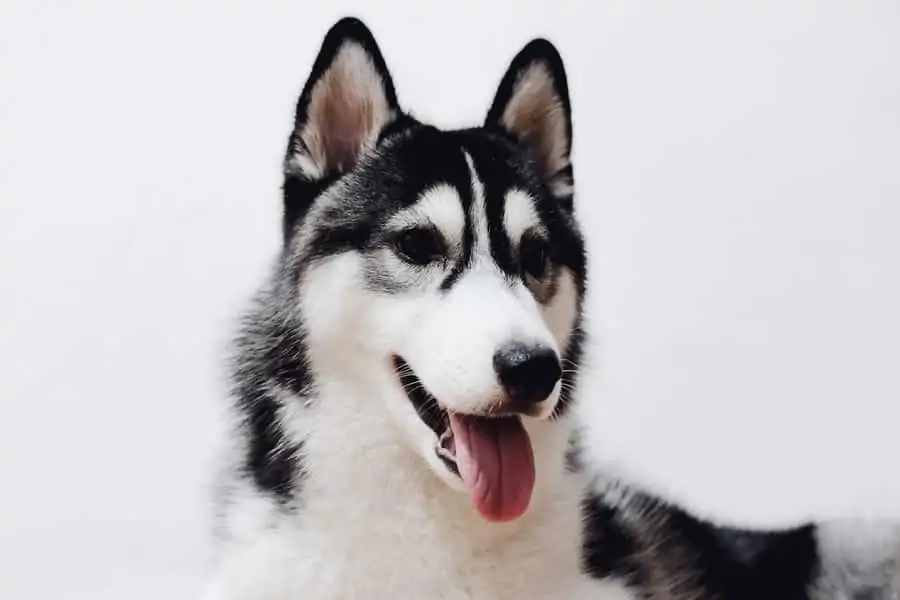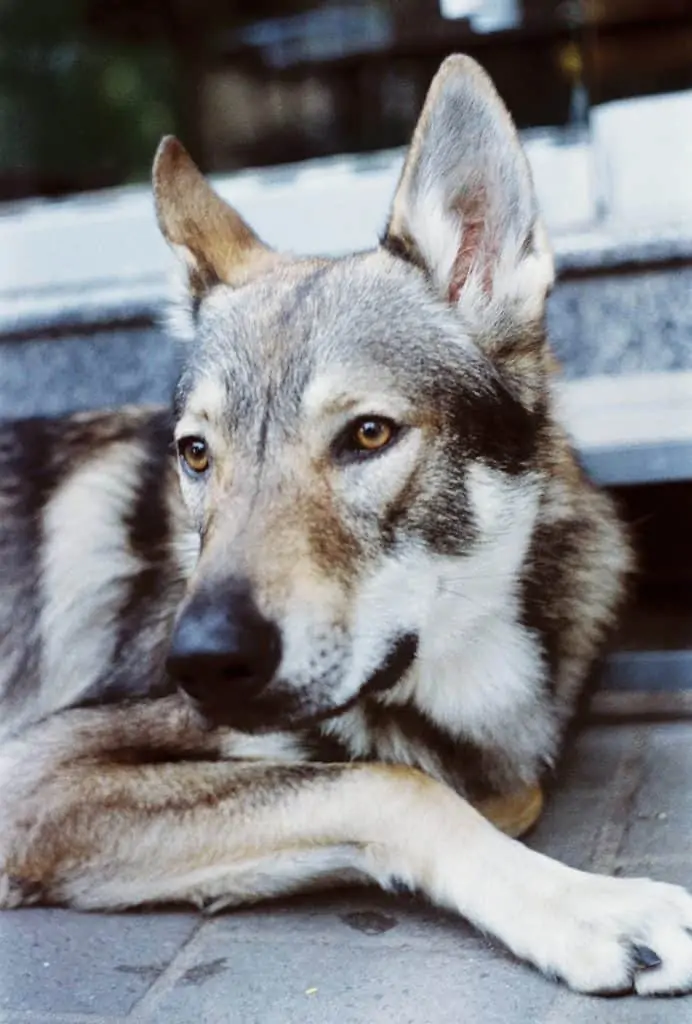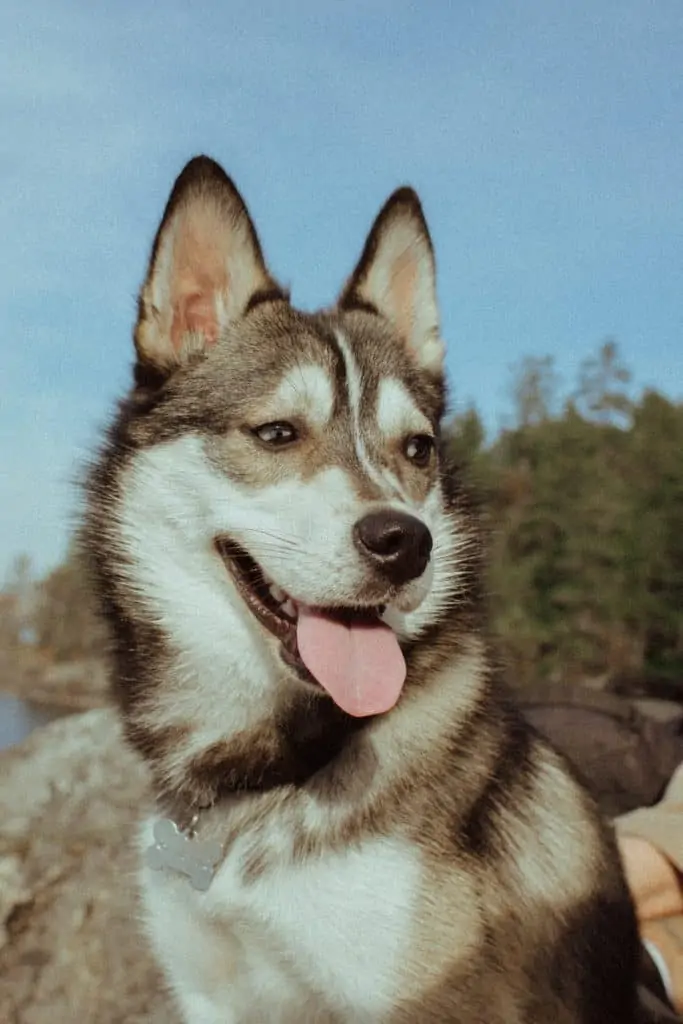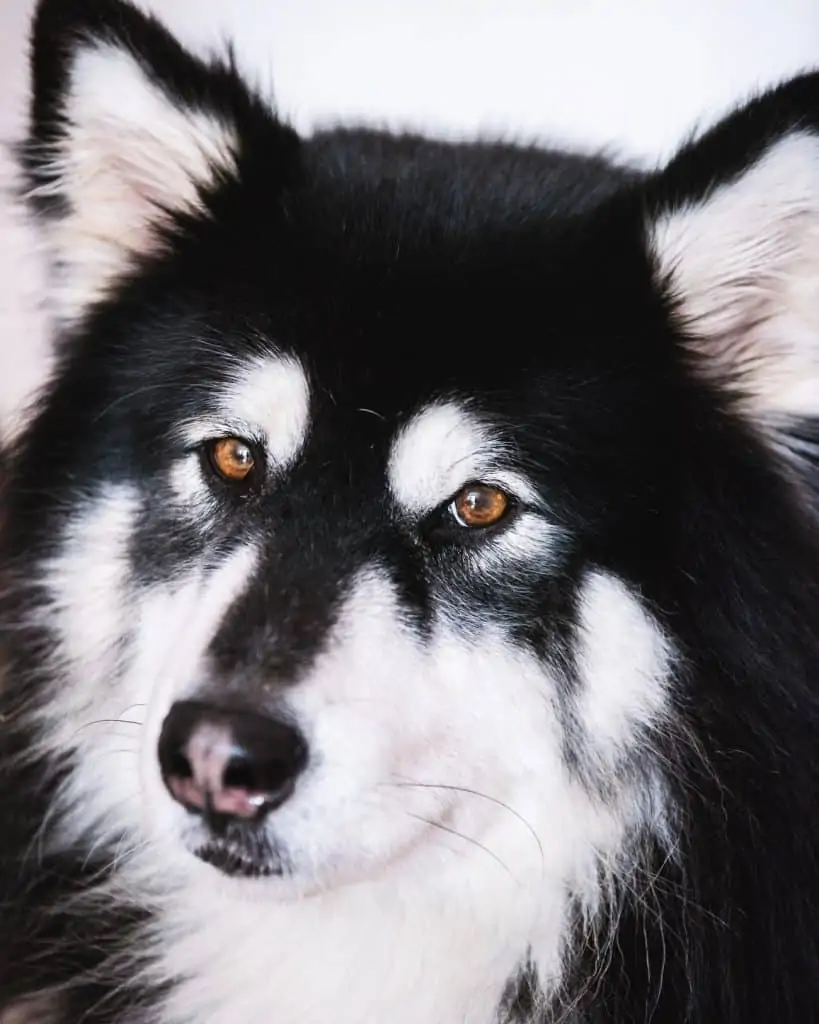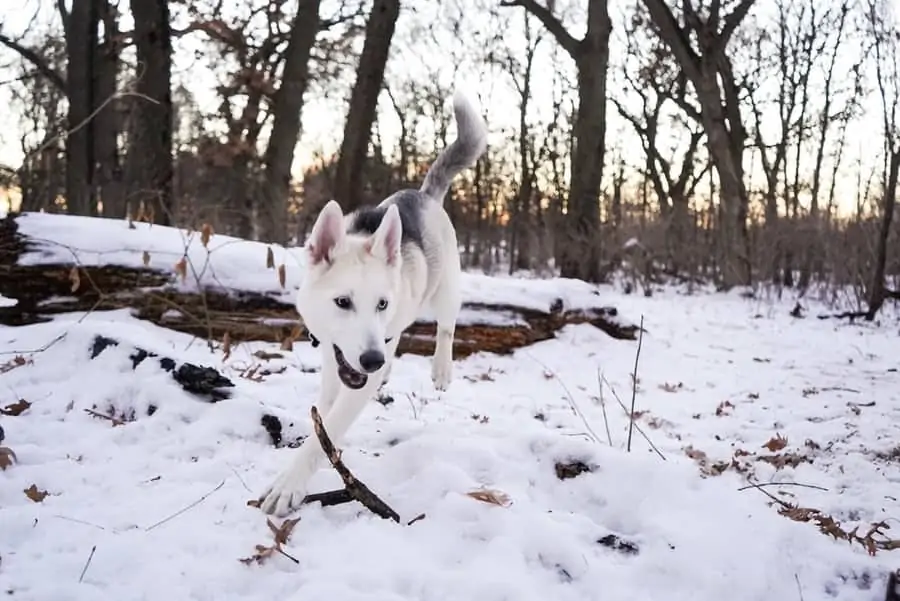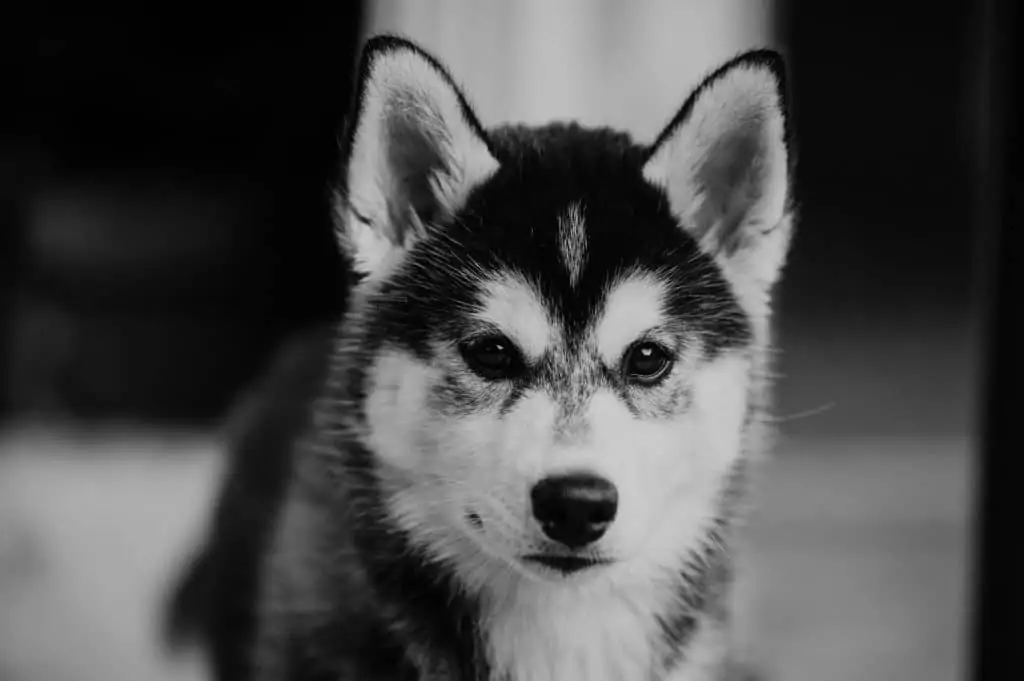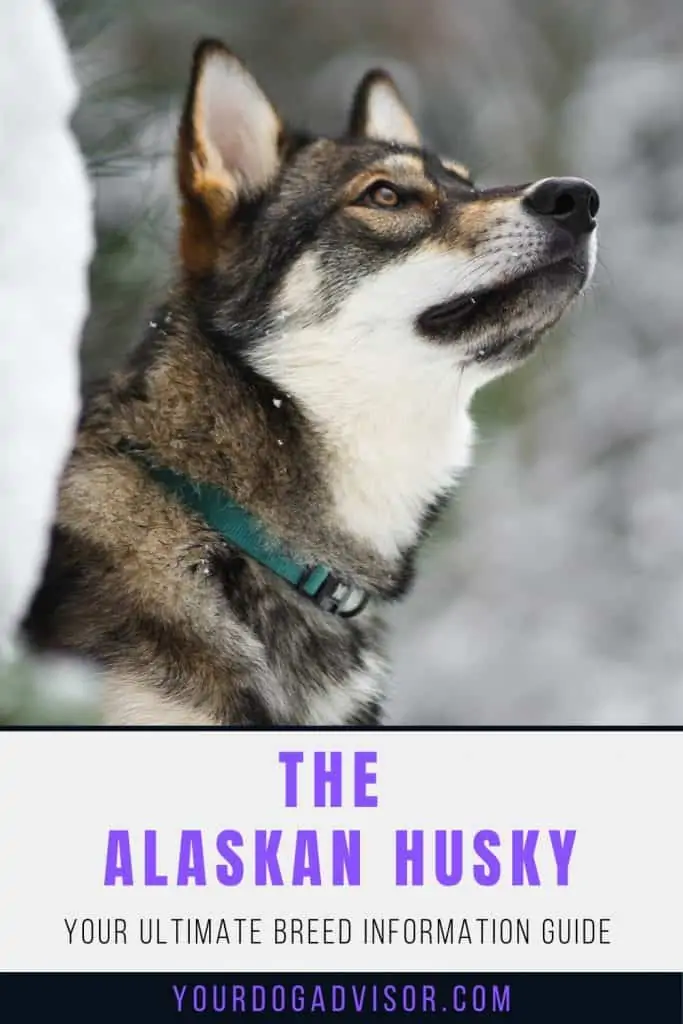Not typically sold as a companion dog, the Alaskan Husky is a hard working sled dog that can be worth upwards of $15,000. That said, there are some lucky dog owners with the stamina and lifestyle that would be ideal for partnering with one of these dynamic dogs.
Are you interested in potentially investing in an Alaskan Husky? Let’s find out. Keep reading to learn more about this incredible, high-energy, and very work-oriented dog.
Contents
The Alaskan Husky At A Glance
The Alaskan Husky is a more energetic version of the Siberian Husky and is not considered a purebred.
Not for the faint of heart, the Alaskan Husky is larger than the Siberain Husky and is not considered a purebred. Instead, he is a mix of several Nordic dog breeds. He is designed for working purposes and is content with this position. Without a job to do or plenty of daily exercise, the Alaskan Husky is prone to some serious behavioral issues, depression, anxiety and more.
For this reason, you’ll be hard pressed to find an Alaskan Husky being sold as a companion dog by a responsible breeder. These dogs are primarily sold to professional sportsmen and are often employed as sled dogs, freighting dogs, sprinters and more.
There is also no real breed standard for this dog and their appearance can vary greatly.
Still, one thing is for sure, these dogs are incredible athletes and are stellar in competitions. They also have the potential to make wonderful companions for the right owner who is active, outgoing and adventurous.
Let’s learn more!
Where Does The Alaskan Husky Come From?
Alaskan Huskies hail from Alaska and are bred sled dogs.
The Siberian Husky is an ancient dog that came long before the Alaskan Husky, though it is one of the Alaskan Husky’s main ancestors.
Hailing from Alaska, the Alaskan Husky was designed as a stronger, more resilient version of the Siberian Husky and is made for intense sports like sled racing and skijoring. In fact, most modern day sled teams employ Alaskan Huskies as opposed to their prior Siberian counterparts.
Alaskan Huskies are a combination of a number of other working breeds, most notably the Siberian Husky, the Inuit Husky, the Border Collie and the German Shepherd. Because the Alaskan Husky is bred primarily for endurance and work, careful attention to his appearance has not been given.
This means that the Alaskan Husky dog’s physical look can vary quite a bit. That said, these dogs still closely resemble and are often confused for their Siberian Husky counterparts.
What Does The Alaskan Husky Look Like?
Because the Alaskan Husky is not technically a purebred, there is no set appearance guideline, though most look similar.
As we mentioned above, there is no set standard for the Alaskan Husky dog’s overall appearance. That said, there are some staples of the breed, including an average size, weight and coat coloring.
Take a look.
Alaskan Husky Height: Varies
Alaskan Husky Weight: Between 40 – 60 Pounds
Alaskan Husky Coat Color: White and chocolate, sable and white, seal and white, grey and white, red and white, black and white
Alaskan Husky Coat Type: Dense, double-coated, shedding
Hypoallergenic Coat: No
Overview of The Alaskan Husky:
Though often mistaken for a Siberian Husky, the Alaskan Husky is different in a few ways that an observant dog enthusiast might be able to pinpoint. If you look closely, you’ll notice that the Alaskan Husky is generally leaner than the Siberian Husky. His eyes are less likely to be blue or green and are most always going to be brown.
Many Alaskan Husky dogs are also often larger than Siberian Huskies, though this is not always the case.
Remember, the Alaskan Husky is a combination of many different breeds. And while it does often maintain a Husky-like appearance, there is no set standard for this dog’s look, and thus the physical attributes can vary greatly depending on the Alaskan Husky dog’s breeder.
What Are The Alaskan Husky Temperament And Personality Traits Like?
Alaskan Huskies are playful, loving dogs who require a devoted owner.
Although Alaskan Husky dogs maintain a number of endearing temperamental qualities, it is also not usually sold as a companion dog. This is because this dog is specifically designed for work and is incredibly overwhelming for dog owners who are unprepared for this dog’s work ethic, high energy, and desire to run, play and explore.
That said, it is possible to find Alaskan Huskies offered at rescues or by certain breeders. If you do get your hands on an Alaskan Husky, be prepared for a dog who behaves like a Husky ten times over. This is a dog who requires near consistent exercise and mental stimulation and can be prone to serious destructive behaviors if his exercise and mental needs are not met.
He is not an ideal apartment dog, but can be suitable for homes with large backyards or even acres of space where he can run and play freely.
Friendly and affectionate, the Alaskan Husky is also a people-oriented dog. He becomes very bonded with his family and makes the ideal companion for active backpackers, hikers, campers, and the likes. People who are looking for a constant dog companion to join them on intensive adventures may find that the Alaskan Husky is ideal.
However, those looking for a more companion style family dog are better suited looking for breeds like the Siberian Husky or the Labrador Retriever.
If you do have the stamina to keep up with an Alaskan Husky, be prepared for a dog who will be by your side consistently. If left to his own devices, Alaskan Huskies can be prone to chewing, barking, howling, whining, scratching, and digging.
Infact, they are very talented escape artists who can both dig beneath and scale over fenced yards. It’s important for any potential owner to ensure their backyard is securely fenced and that steps are taken to keep their Alsakn Husky from digging their way out.
When it comes to getting along with children and other pets, the Alaksan Husky is a gem. He is a bred pack dog and will enjoy playing with other household dogs, and is a playful pup who will bring lots of joy and laughter to youngsters.
Of course, it’s very important to ensure your Alaskan Husky is properly trained and socialized around children, and that youngsters are monitored around the family dog to ensure everyone is getting along safely and happily.
What Are The Exercise Requirements For A Alaskan Husky?
Alaskan Huskies are bred sled dogs. They are highly active and energetic.
Most dog enthusiasts are aware that Huskies in general are very high energy, but they may be surprised to learn that the Alaskan Husky is high energy and then some. This dog is designed to run and has incredible endurance.
Exercise should be routine and consistent with multiple walks or jogs a day and plenty of free time outside in between.
Alaskan Huskies make wonderful jogging companions and hiking partners, and they will enjoy an owner who takes time to play with them in the backyard. If left alone outside for too long, you’ll wind up with a very unhappy dog who let’s you know it with howling and whining.
Along with routine exercise, the Alaskan Husky will also need to be kept mentally stimulated. Puzzle toys, routine training, and lots of adventure will help keep your Alaskan Husky at his happiest.
If his exercise and mental stimulation needs are not met, Alaskan Huskies can become incredibly problematic and overwhelming. Worse still, they can become depressed, anxious, stressed and even aggressive.
How Do You Properly Train and Socialize An Alaskan Husky?
These are people-oriented dogs, though training can be tough. It should be kept consistent and game-like to make it successful.
All dogs require routine training and socialization in order to grow up happy and healthy, and the Alaskan Husky is no exception. A working dog at heart, this is an energetic breed who will be happy to be alongside you in all your endeavours. In fact, and as you may have picked up by now, your Alaskan Husky may not have it any other way.
Bring your Alaskan Husky with you as often as possible beginning in puppyhood. Ensure he is exposed to as many new sights, sounds, people, places and things as possible, and try and make sure these new experiences are positive for him.
Refrain from forcing your Alaskan Husky into an experience that is clearly frightening, as doing so could exasperate anxious behaviors and fears and lead to problems in the future.
Instead, gently encourage him to explore the world around him and provide him with plenty of treats and praise along the way.
Training should also be taken seriously when it comes to the Alaskan Husky. These are intelligent working dogs who require lots of mental stimulation, and routine training can help aid in keeping them mentally sound.
Keep training light and gamelike, and bear in mind that Alaskan Huskies, though clever, can be stubborn if they become bored. Training should be kept in short sessions using treats and positive reinforcement, with many breaks in between.
Avoid punishing or scolding your Alaskan Husky during training sessions. Doing so could hinder his ability to learn and lead to him shutting down. Worse, it could break the trust between the two of you, further making training more difficult.
If trained and socialized properly, a happy Alaskan Husky will know no strangers and will get along joyfully with everyone he meets.
The Alaskan Husky Grooming Requirements
Alaskan Huskies have thick, double coats that are weather resistant and shed heavily.
Alaskan Huskies are shedding breeds who shed year round, which could pose some problems for allergy sufferers. That said, their coats are weather-resistant and relatively low maintenance.
Most Alaskan Huskies only require bathing once every couple of months unless they get into something especially dirty. They will need to be brushed routinely with an undercoat comb and deshedding brush to reduce the amount of loose hair they produce, and to also help reduce chances of doggy odor and skin issues.
Along with routine brushing and occasional bathing, your Alaskan Husky will need his ears checked regularly to keep them free of waxy buildup and debris and to prevent potential ear infections.
He should also have his teeth brushed daily with a dog safe toothbrush and toothpaste, and his nails should be trimmed often to keep them from breaking or splitting during exercise or play.
It’s very important not to shave a double coated dog like an Alaskan Husky, even in an attempt to keep them cool. The Alaskan Husky’s double coat is designed to protect them from extreme elements like heat and cold, and shaving their coat can make them more susceptible to heat stroke and sunburn.
And speaking of health, let’s learn more about the Alaskan Husky’s overall lifespan and any potential health issues he may be susceptible to.
Alaskan Husky Health Issues
All dogs can be prone to genetic health issues, and the same is true for the Alaskan Husky
Like all dogs, the Alaskan Husky can be prone to a number of serious genetic health issues. That said, because he is a combination of so many different dog breeds, many experts agree that he is a relatively healthy dog with a less likely chance of inheriting serious issues from his parent breeds.
Still, there are common issues these dogs are prone to that a potential owner should be aware of.
With a lifespan of between 10 – 13 years, the Alaskan Husky can be prone to:
- Hip and Elbow Dysplasia
- Progressive Retinal Atrophy
- Hypothyroidism
- And Lysosomal Storage Disease
These above health issues can be compounded if you get your Alaskan Husky from an unqualified source who has not implemented responsible breeding practices. Along with buying or rescuing your Alaskan Husky from a responsible source, you can also help combat health issues by following the below tips for each category.
Diet
As a very high energy dog, the Alaskan Husky requires a dog food that is high in real animal protein. He will also need to be on a quality dog food that is rich in fatty acids, carbohydrates, vitamins and minerals, and is a good source of water.
Avoid feeding your Alaskan Husky dog foods that contain additives, fillers, soy, wheat, corn, or animal byproducts.
You do have the option of feeding your Alaskan Husky dry dog food, raw dog food or wet dog food, or you can opt to make homemade dog food your pup.
We should note that if you choose to feed your Alaskan Husky raw or homemade dog food, you have more of a chance of accidentally missing some key nutrients your dog needs to thrive.
Be sure to speak with your veterinarian about supplementing your Alaskan Husky’s diet to ensure he is getting everything he needs out of each meal.
Exercise
The Alaksan Husky clearly thrives on routine exercise and he won’t let you forget it. While all dogs require a certain amount of activity each day, the Alaskan Husky will need activity quite frequently. This includes plenty of mental stimulation as well.
Routine, healthy exercise and mental stimulation will help strengthen your dog’s immune system, reduce the chances of him suffering from bone and joint issues as he ages, and will help keep him from experiencing stress and anxiety.
Grooming
Although the Alaskan Husky doesn’t require extensive grooming, maintaining a good grooming schedule is essential to his overall health and wellbeing. Outside of keeping your Alaskan Husky looking his best, grooming also ensures you are able to keep a close eye on your dog’s body and will be better able to notice strange lumps, bumps, infections, wounds or skin issues.
Routine Vet Visits
Vet visits may be costly, but it’s important to keep up with routine wellness checks with dogs. Routine vet exams can help catch problematic diseases before they become too serious, which actually saves you money in the long run.
Most experts recommend that dogs under the age of seven see their veterinarian at least once a year, while dogs over the age of seven should be seen once every six months.
If you are worried about caring for your Alaskan Husky if he gets sick or taking care of medical expenses, it’s not a bad idea to consider pet health insurance.
What Are Some Pros And Cons Of Owning An Alaskan Husky?
Though intelligent and loving, Alaskan Huskies can be seen as hyper and overwhelming to novice dog owners.
While the Alaskan Husky is an intelligent, playful, and people-oriented dog, there is a reason he is seldomly sold as a pet. This is a dog who can quickly become overwhelming for novice dog owners and those who are not able to keep up with his high energy level.
With that in mind, let’s take a look at some pros and cons of owning an Alaskan Husky.
Pros To Owning An Alaskan Husky:
- Alaskan Huskies are very people oriented
- They get along well with children and other pets
- They make great companions for very active and outdoorsy people
- Alaskan Huskies are friendly and outgoing
- They are relatively healthy and long-lived
- They require only moderate grooming
Cons To Owning An Alaskan Husky:
- Alsakan Huskies are incredibly high-energy
- They are not suited for apartment living
- They can be very vocal and are known to bark and howl when upset
- Alaskan Huskies are heavy shedders
- They require near consistent exercise
- These are not ideal dogs for more low-key families or individuals
- They are clever escape artists
- Alaskan Huskies are prone to digging
- They can be prone to serious behavioral problems if their needs are neglected
What Is The Ideal Home Type For The Alaskan Husky?
These high-energy and athletic dogs will do best in homes with experienced dog owners who have time to devote to their dogs.
Alaskan Huskies are some of the more high maintenance dogs in the canine kingdom. They require a devoted owner with a home large enough for them to play and a backyard large enough for them to run.
They will also need family members who can be home with them often, and owners who are able and willing to constantly exercise and train them to keep them happy.
The ideal owner will be an active, outdoorsy individual who is looking for a constant companion in their dog. Many backpackers, avid hikers, campers and climbers find that Alaskan Huskies make ideal pets.
It’s also important to note that Alaskan Huskies, though energetic and enthusiastic, are not solely outdoor dogs. They are people dogs. They will need to be with their people as often as possible to avoid serious behavioral issues.
Choosing An Alaskan Husky Puppy
Avoid backyard breeders or unqualified sellers when looking for an Alaskan Husky puppy.
Though not commonly sold as pets in the United States, determined enthusiasts may be able to find Alaskan Husky puppies for sale through reputable breeders. That said, these breeders often charge a hefty price for their puppies, with some going for upwards of $15,000.
Your best bet at getting your hands on an Alaskan Husky puppy is to go through a rescue. Because these dogs are so high-energy and demanding, many owners unfortunately find they cannot manage the dog and are forced to get rid of them.
For this reason, we recommend looking into rescuing an Alaskan Husky to help free up shelter space and give a dog in need a good home. Of course, only do so if you’re up to the job.
Remember, these dogs are incredibly high-maintenance.
Most shelters charge a fraction of the price of breeders. Furthermore, they often will have had their Alaskan Huskies undergo behavioral testing to ensure they are ready for adoption. Some rescues may even offer you a free initial vet exam.
If you do choose to go through a breeder, make sure you go through a qualified one who can provide you with a certificate proving their dogs have been screened and cleared of any potential health issues.
Avoid getting an Alaskan Husky through unqualified sources offering a puppy at a bargain price. You are much more likely to wind up with a sick puppy this way, which can cost you more money and heartache in the long run.
The Top Products Every Alaskan Husky Owner Needs
Alaskan Huskies are unique dogs. Let us help you prepare for being the best Husky parent you can be with the below products.
Because the Alaskan Husky has such unique needs, it’s important for potential owners to be prepared for this energetic and athletic breed.
Luckily, we have done our research and are excited to offer you a few of our favorite products for the Alaskan Husky dog below.
Take a look!
Furminator Undercoat Deshedding Tool
[amazon box=”B07MZN2VZC” style=”light” title=”The Furminator Deshedding Tool” template=”widget” ]
Because the Alaskan Husky is a double coated breed, it will be important to invest in a deshedding comb. One of our top picks is the Furminator Undercoat Deshedding Tool above. This is a self cleaning undercoat rake that helps remove loose hair from the undercoat and reduce doggy odor and potential skin issues.
It is easy to use and store, and is safe for everyday use.
PetSafe Easy Walk Dog Harness
[amazon box=”B000E69VDC” style=”light” title=”Pet Safe Dog Harness” template=”widget” ]
The PetSafe Easy Walk Harness is designed for larger, more athletic dogs like the Alaskan Husky. It helps reduce pulling and makes walking much easier and more comfortable for everyone.
This harness comes with a front clip to help redirect your Alaskan Husky if he should get ahead of himself on walks. It also does not put undue pressure on your dog’s sensitive trachea or throat.
iYoShop Hands Free Jogging Leash
[amazon box=”B07R56CBWX” style=”light” title=”Jogging Leash” template=”widget” ]
The Alaskan Husky is born to run, and he’ll make an excellent jogging partner for the right owner. For this reason, we are including this hands free jogging leash by iYoShop. The leash is designed to go around your waist and even includes a pouch to hold all your essentials while you exercise.
The leash includes a bungy that makes running easy and will not jerk or pull you or your dog if you get too far apart. This jogging leash is strong enough to hold dogs from 18 to 150 pounds, so it will be perfect for your Alaskan Husky.
So, there you have it. That is everything you need to know about the outgoing and athletic Alaskan Husky. Now it’s your turn to share. Did you realize that the Alaskan Husky was so different from the Siberain Husky?
Tell us what you think about this incredible working dog in the comment section below. Thanks for reading!
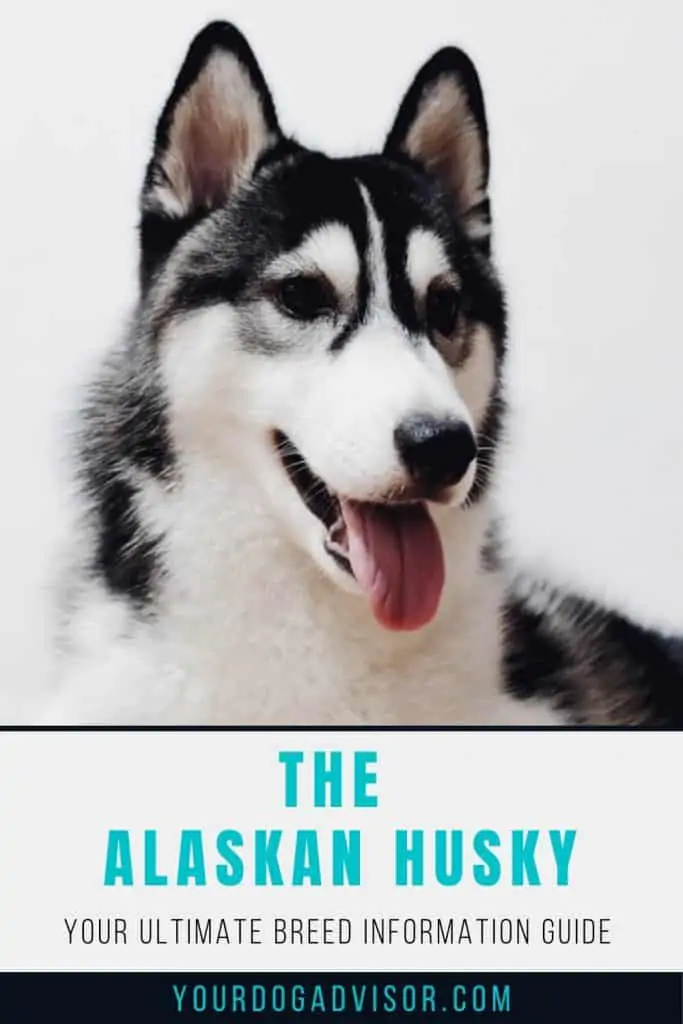

Sara Seitz has spent most of her life in the pet industry and has a bachelors in animal behavior from Colorado State University. Sara started working with dogs and cats as a high schooler at a rural boarding kennel. There she learned a lot about the bad and the ugly of the pet service industry. But not even the toughest day at that job would dissuade Sara from following her dream of working with animals.
In college, Sara got a job at a dog daycare and boarding facility in Fort Collins, Colorado. Her new career provided even more opportunities for learning about dog behavior than her classes did. As general manager of the daycare, Sara helped the company launch a new in-home pet sitting branch and trained to become a certified dog trainer. Between shifts taking care of peoples pets in-home and supervising dogs during playtime at the daycare, Sara organized and taught obedience classes.
Sara has always been passionate about bettering the lives of our canine companions. She soon found that advocating for and educating owners in the power of positive reinforcement training was one of the best ways to help dogs and their owners live happier lives.
